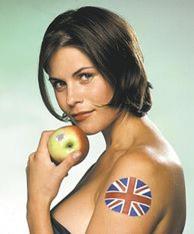
Several factors have transformed the top-fruit industry since the 1950s, according to English Apples & Pears CEO Adrian Barlow.
“In the early 1950s, the market was very different because we were selling into the main greengrocers and independent fruiterers, and supermarkets hardly existed,” he recalls. “There was quite a bit that was sold direct to consumers, because the spread of the population was greater than it is today and there were more people living in rural localities and communities were more insular.
“That meant there was a lot of local shopping across the country as a whole and people were more connected with farming and they were acquiring more direct from farm than is the case today.”
Imports of apples and pears were a far smaller part of the market, with English fruit providing the bulk of the country’s needs, he says. “At that stage operating in a restricted market - restricted in that you needed a special license to be able to sell imported apples during the English season - and obviously that meant English growers supplied virtually the full demand for apples.
“That was a very big difference because it meant varieties like Granny Smith and Golden Delicious, for instance, could not come into this country unless there were shortages. All that changed the moment we entered the common market and became members of the EU. At that stage, the market was open to everyone. We were then growing a whole range of old English varieties, many of which have virtually disappeared from commercial production now.”
Advances in production techniques mean yields have increased dramatically. “The trees we were producing 60 years ago were widely spaced, allowed to grow tall and picking was done with ladders,” says Barlow. “Gradually there was the introduction of dwarf rooting stocks, which meant the size of trees could be reduced and picked without huge ladders. It meant picking was much faster and one has seen the planting of very intensive orchards. Back then there were around 600 trees per hectare. Now it’s between 2,000 and 3,500 a hectare.
“And orchard management has changed dramatically. Now you have picking trains, which is a tractor pulling trailers with bins on the back and pickers stand on the trains. In the 1950s yields would be around 10 tonnes per hectare. Now with modern varieties and techniques it is around 50 tonnes per hectare.”
Looking ahead, Barlow sees the further intensification of orchards with automatic harvesting machinery, eliminating manual picking operations.
“Also, I think we will see the English season extended, and in 10 years I think we may well see English dessert apples available for 12 months of the year,” he predicts. -



